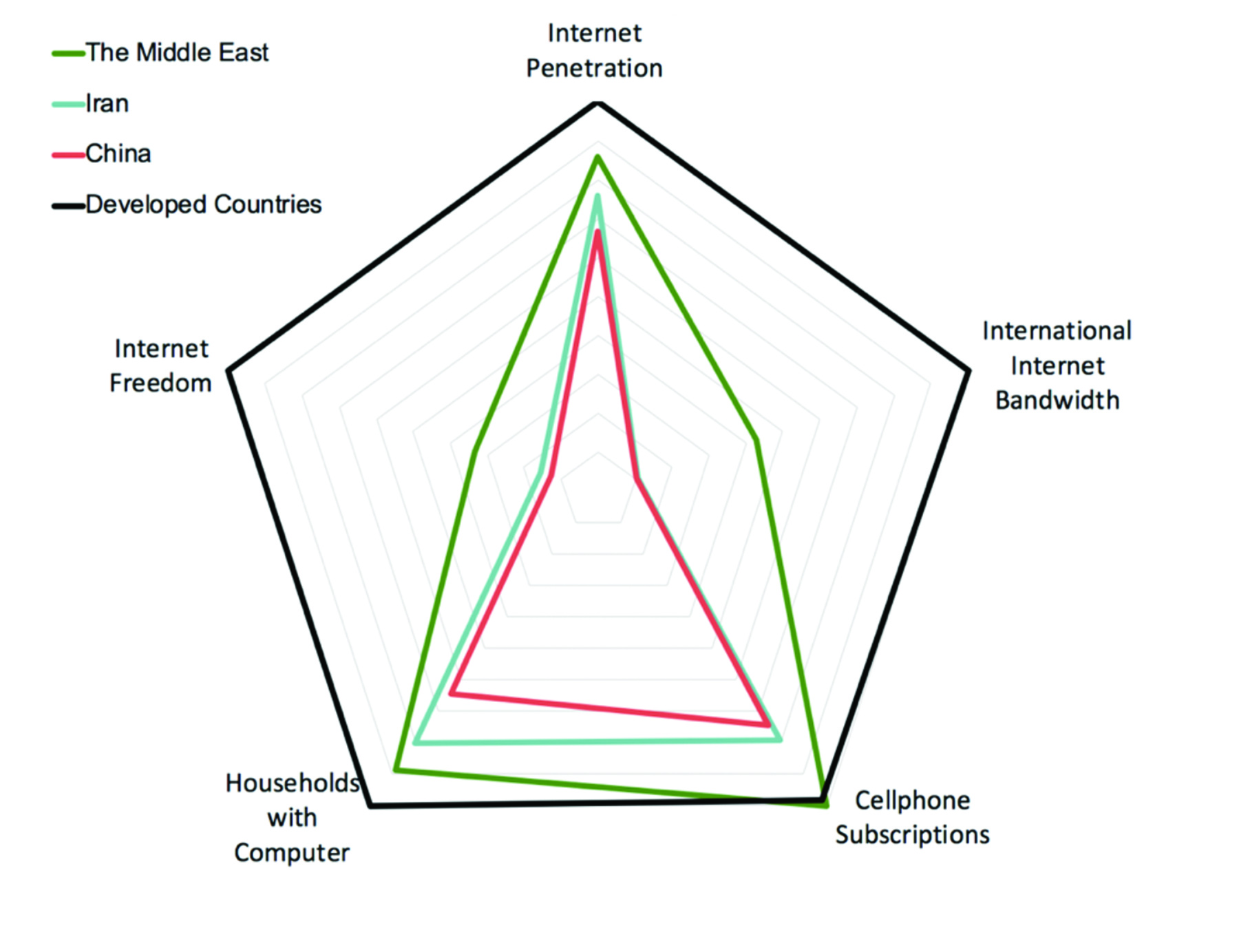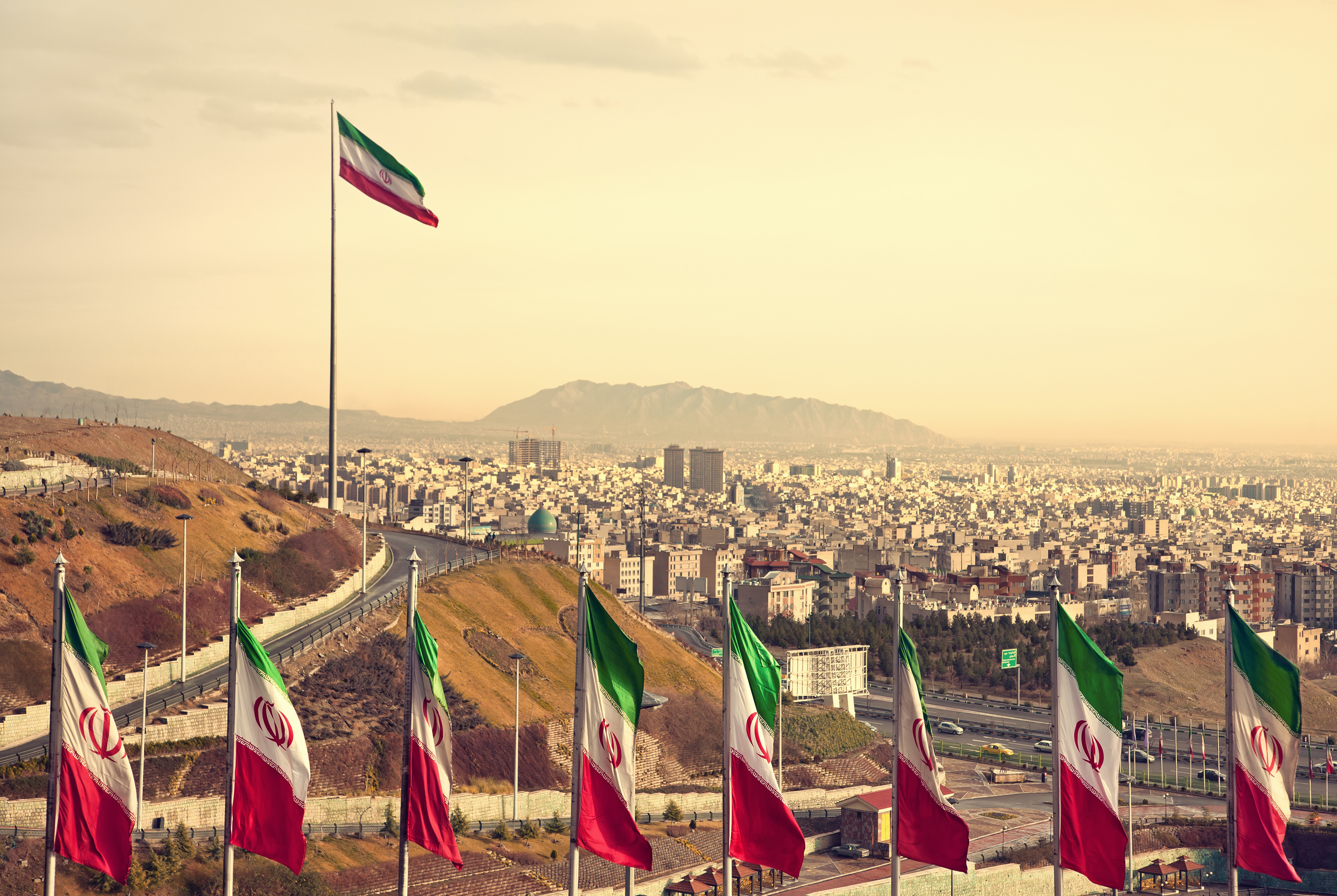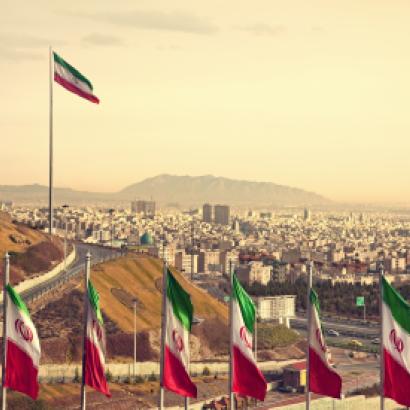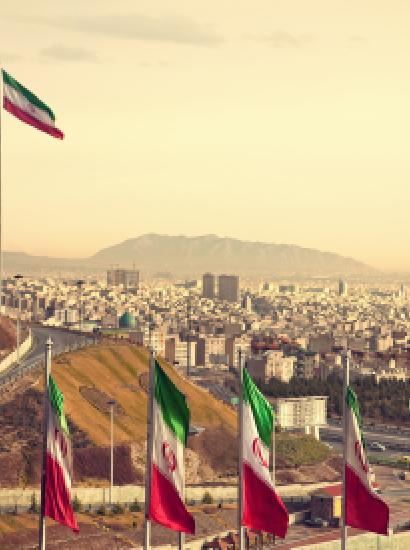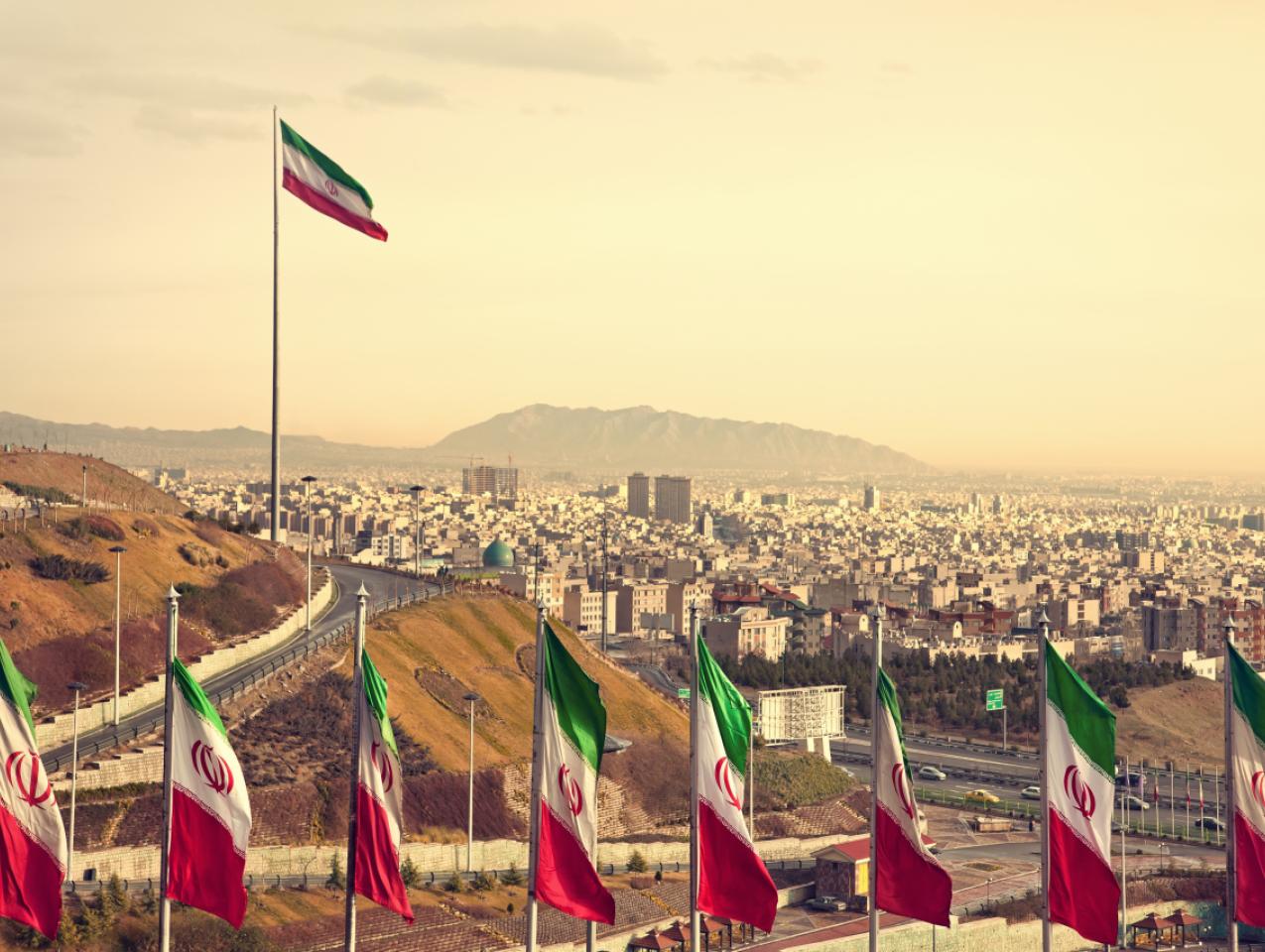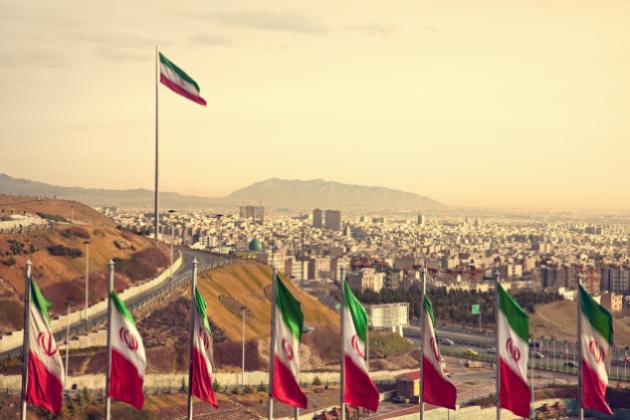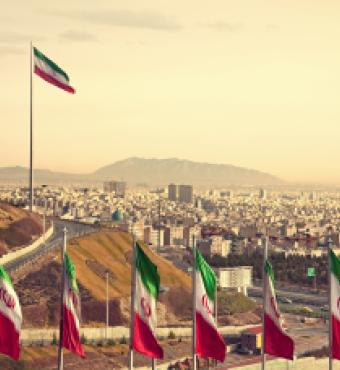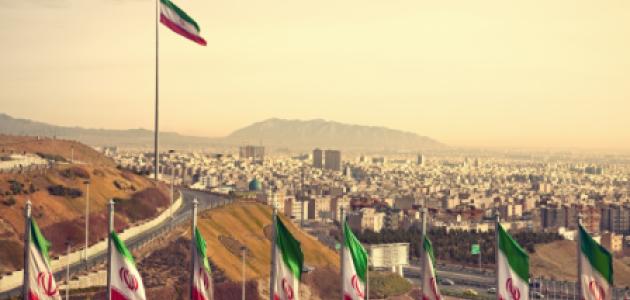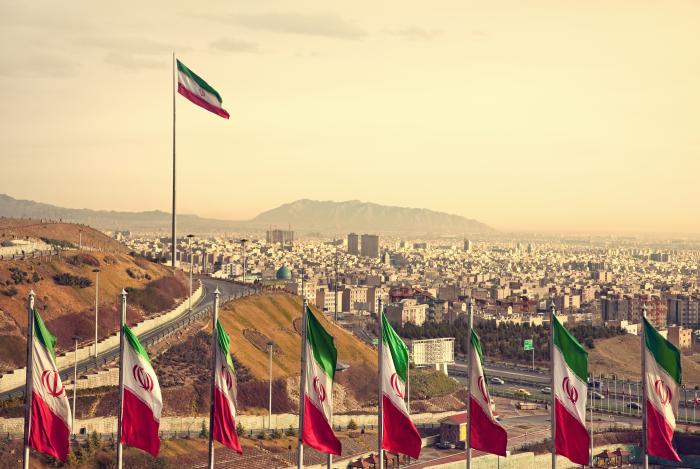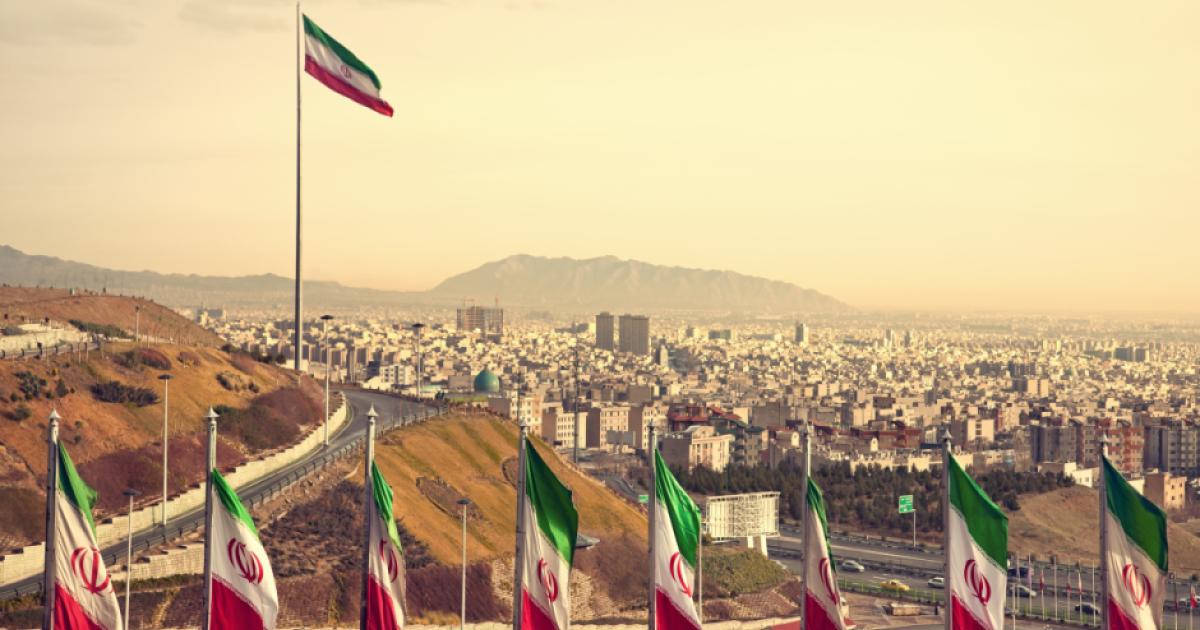Introduction1
For the last 150 years, Iran, like most countries in the industrializing world, has experienced the tumults of two epochal global revolutions—the industrial revolution that changed the nature of labor and now the advent of the “second Machine Age,”2 which is changing the nature of not just labor, but life and leisure, knowledge and information. In the same period, Iran has gone through the travails of two domestic revolutions—the first in 1905-07 when the country’s elite tried to introduce democracy and modernity to the country, and the second in 1979 when a democratic mass movement overthrew the monarchy but eventually begot the rise of a theocratic despotism keen on dismantling as much of modernity as possible.
In the span of these tumultuous years, Iran as a nation has also experienced the three biggest mass migrations in its 3,000-year history. More than two thirds of the population moved from their traditional feudal villages to increasingly mercantile cities; women gradually moved from the inner confines of their homes—the andarun—to the public domain; and finally about five to seven million Iranians migrated to virtually every corner of the world, creating, for the first time, a powerful diaspora.
The compressed coil of these historic dislocations is being released in the last few decades, at the time of the “second Machine Age.” The tempo of change has been expedited and the scope of transformations expanded to include every facet of life. The fact that in the last three decades, Iran has undertaken a controversial nuclear program that has squandered tens of billions of dollars on the program, and cost arguably several hundred billions in lost economic opportunities, has only added new layers of complexity and urgency to the situation.3 Even in the best of times, and with the most competent leadership, the challenges would have been nothing short of Herculean.
But these are far from the best of times in Iran. A septuagenarian male elite—more specifically about 2,330 individuals, virtually all men4—have occupied every major political position of authority in the country. The country, as we will see, now faces a serious economic, political, cultural, and environmental crisis—everything from shrinking revenues from oil and gas to a financial crisis and a crisis of legitimacy for the government. Yet, the most powerful of the ruling male elite, Mr. Ali Khamenei, the “Supreme Leader” for more than three decades, dismisses all talk of the impending socio-economic crisis and inevitable transitions as parts of a propaganda war, a “Cultural NATO,” masterminded by the “Great Satan” and “Zionism.” The only solutions he accepts come under the rubric of what he calls “Resistance Economy,” an incoherent combination of slogans about “self-reliance” and uses of a “Jihadi style” of leadership. The only transition he openly and repeatedly admits is what he calls a “historic turn” for the rise of Islam around the world. What makes his peculiarities relevant for governance is not just the titular powers that come with his claimed divine legitimacy but the giant sums of money and resources he has direct, unsupervised control over. Reuters estimates that no less than 90 billion dollars are controlled directly by him. Offices under his control, and the IRGC under his nominal command, control a disproportionate share of the Iranian economy, and their greed, no less their corruptions, has no apparent limit.
But facts are surprisingly stubborn. They defy the dictates of the most self-assured despots, or the prayers of the most pious (and certainly their “Jihadi” management style). Today, after four decades of Jihadi management in the country—broken only briefly by occasional bouts of technocratic ascent—signs of stress in all sectors of the economy are multiplying. Double digit unemployment and inflation have been chronic facts of life for almost forty consecutive years.5 A water crisis is causing large and irreversible damage to the environment and gradually turning into a major risk for the food security of more than 80 million people. Floods of unprecedented ferocity in late March and early April 2019 caused havoc on cities and villages, made worse to no small measure by mismanagement, badly constructed or selected dams, deforestation, and reckless building on riverbeds and in flood-zones, particularly by the IRGC and its affiliates. There is no evidence yet that the deluge will in any way alleviate the historic water shortages that had come about. What is more likely is that in the months ahead, the role of these institutions in worsening the consequences of the flood, or their failure in taking preemptive measures is likely to become a thorny political issue for the regime. One plan to limit the water crisis by limiting economically unsound farming and replacing it with import of food stuff estimates that the cost will hover around 25 billion dollars per year—or about half of Iran’s entire oil revenues, before the sanctions.6 Crude oil exports have of course plunged due to new sanctions implemented since late 2018. The use of AI technology has made the enforcement of these sanctions far more efficient.7 Even if sanctions end, the future of oil prices, and Iran’s share of the market hardly offer a rosy picture. Shortsighted in every facet, the regime, which heavily subsidizes the price of gas, has made it economically unprofitable to invest in solar energy—in spite of Iran’s enormous natural possibilities in this domain.8
Financial markets are going through bouts of instability that are historically unprecedented and can potentially cause major economic contraction. In its most recent report, the IMF already predicts that the Iranian economy will shrink by about six percent in the next year (having experienced more than three percent contraction over the last year).9 Banks are all saddled with enormous amounts of non-performing loans. Offering interest rates of up to 30 percent, the banking system has essentially turned into a country-wide Ponzi scheme with a growing imbalance in their balance sheets.10 The government taking over four semi-private, IRGC-dominated, virtually bankrupt banks simply transfers the burdens to the taxpayers, forestalls a more general breakdown, and offers tactical solutions to strategic problems.
Aside from the problem of major banks, there are at least 7,000 small “Islamic financial institutions” posing yet another looming burden on future budgets and the country’s financial stability. Their rapid growth in forty years, from 200 in 1979 to 7,000 in 2016, and the fact that of these at least 2,500 are directly linked to an entity called Institute of Islamic Economy, and finally the connection of most such institutions to some religious, military, or paramilitary organizations has made any real supervision over their work impossible. In a move reminiscent of changed regulations that allowed savings and loans associations in America to engage in normal banking activities, these Islamic financial institutions, often begun as micro-credit units, forced a change in the law in Iran and began to behave as full-fledged but unsupervised banks. Their corrupt and irresponsible management has brought a majority of them to the brink of bankruptcy.11
Another major challenge facing the economy is the dire financial standing of pension funds that are at the verge of becoming insolvent despite what has been a favorable ratio of those of working age to those over 65. The Ahmadinejad years, particularly the bizarre stewardship of Said Mortazavi—one of the most brutal interrogators in the sordid history of the Islamic Republic—over the biggest of these funds, and a pattern of plunder and bad loans have made these funds a ticking bomb. The pension crisis not only threatens the economic well-being, even survival, of the society’s most vulnerable but also has negative consequences for the availability and health of capital markets urgently needed for economic development.
Since the inception of the Islamic Republic, the government of Iran has responded to these challenges with short-sighted, populist, and unsustainable policies that offered tactical remedies but never addressed the underlying problems. The moment of reckoning is near. The inevitable departure of the economy from its current disequilibrium to a new position that is better aligned with the fundamentals will be associated with either a major structural change12 or at least a devastating austerity—an austerity that the regime, given its obvious unpopularity, can ill afford or enforce. All factors indicated a fraught path forward for the existing model of semi-competitive, clerical despotism that claims legitimacy and authority not from the people but from Allah. A more detailed look into some of these factors can better show the complicated nature of the challenge.
Demography
At the beginning of the 20th Century, Iran’s population was somewhere between 11 to 16 million people. No census had been taken. More than 90 percent lived in rural areas. Moreover, in the first two decades of the last century, when Iran was virtually a “failed state,” it is estimated that at least a quarter of the country’s population was lost to cholera, hunger, Spanish flu, colonial intrigue, and calamities like religious forces resistance to teaching of germ theory.13 In 1979, when Ayatollah Khomeini came to power, the 35 million population of the country was split equally between urban and rural areas as the result of land reforms undertaken by the Shah—with the strong urging of the Kennedy administration. Today, Iran’s population is more than 82 million, and 60 million of them (about 75 percent) live in urban areas (see Figure 1). The transformation from an agrarian village-based economy, which took several uneasy centuries in Europe, occurred in Iran over several equally uneasy but rather short decades, warped and deformed by the consequences of the “Energy Curse.”
In the first few years after the revolution, the number of annual births in Iran doubled. An important factor contributing to this sudden increase was Ayatollah Khomeini’s call for the creation of an army of 20 million soldiers for the cause of the revolution. Another consequential factor in this change has been continuous relative improvements in public health—both prior to and after the revolution. In the mid-20th Century, life expectancy at birth in Iran was 40 years; by the early eighties, it had increased to 75 years. The mortality rate of children under the age of five declined from over 30 percent in 1950 to 11 percent by the end of the Pahlavi’s regime, and then to 1.5 percent today (see figure 1).
Over the past half century, Iran’s official government population policy has undergone four radical reversals. As part of his vision to modernize the society, the Shah (who ruled from 1941 to 1979) implemented Iran’s first family planning program in 1967. The chief goals of the policy were improving public health and lowering fertility. The program, however, had only marginally reduced women’s fertility before it was abandoned by the Ayatollah’s regime in 1979. Ayatollah’s dream of a 20-million-man army of Allah brought about an abrupt rise in the number of births. The country spent much of that first 10 years engaged in a bloody war with Iraq, and supplying the war with soldiers was part of the political landscape leading to increased fertility.
Not long after the end of the war in 1988, in a sharp change of policy, the government, faced with a population boom and returning soldiers from the war, launched a country-wide family planning program to control the country’s extremely fast population growth. Free access to modern contraceptives was made available by family planning services throughout the country. More importantly, a multitude of socioeconomic factors contributed to the unusual success of this program. Not only was it a prudent policy, its goals and axioms were commensurate with social changes in Iranian society at large. The rise in urbanization, female education, rise in the age of marriage, as well as a shifting sense of responsibility for nurturing children—instead of looking at them as either free labor or just a gift of Allah—brought about fundamental changes in the reproductive behavior of Iranian families. In a mere decade from the mid-80s to mid-90s, Iran’s total fertility rate dropped from an average of 6.2 to 2.5 births per woman (see Figure 2). Since the 2000s, Iran’s total fertility rate has hovered around 2.0 births per woman, making the Iranian program arguably the most successful of its kind on record. What makes the fast fertility decline in Iran even more impressive is the fact that it occurred in the absence of a coercive government policy and legalization of abortion. As a result of this fertility decline, the population growth rate in Iran has now eased to 1.2 percent per year, which is comparable to the global average rate of population growth.
In spite of the massive drop in fertility rate, the high fertility of past decades will continue to fuel Iran’s population growth for at least another decade. Furthermore, since 2010, the government has yet again changed its population policy. Reduced fertility, they now say, was an imperialist, anti-Islamic trick. They have taken new pronatalist population policies, but it has been of no avail. If the success of the past was because policy was in tune with socio-economic developments of the society at large, its failure today is due in equal measure to the policy being quixotic and contrary to the plans and preferences of Iranian women (see figure 2).
Owing to marked changes in mortality and fertility rates, the age structure of Iran’s population has shifted substantially over the past four decades. Between the 1970s and 1980s, the age structure of Iran’s population could be best described by a very wide-base pyramid, reflecting a high birth rate (and low life expectancy). The youth bulge phenomenon, however, characterized the age structure of Iranian population since 1990s. The age composition of Iran has become more uniform over time as the population ages and the larger cohorts move up the pyramid. Children aged <15 constituted 46 percent of the total population in 1986, but their share almost halved, accounting for 24 percent of the population in 2016. The share of working-age population (aged 15–64) increased from 51 percent in 1986 to 71 percent in 2016, and yet this age group is expected to reach a maximum size of ~65 million by the mid-2030s (see Figure 3). In 2050, Iran will be older than the current U.S. population but still younger than today’s Japan.
Iran’s current age structure represents a “demographic window of opportunity,” when the number of people in the working-age cohort exceeds that of the dependent population (i.e. <15 or >65). The dependency ratio, the ratio of dependent cohort size to working-age cohort size, has declined rapidly since 1988 and plunged to below 0.5 in 1997.
Fertility drop is often followed by a period of labor-force growth relative to other cohorts, typically as long as five decades. If accompanied with proper planning and investment, this growth can result in substantial economic development. With a dependency ratio of <0.5, Iran began to experience a demographic window of opportunity in 90’s. This window is expected to last about four decades before its dependent population starts to rise and outnumber the working-age group again. During the Ahmadinejad presidency, when this window was clearly open, Iran had a windfall of revenues resulting from the rising price of oil. An estimated 700 billion dollars—out of a total of almost 1.3 trillion dollars Iran has received in oil revenue since the 1979 revolution—came into government coffers. But his populism, harebrained economic ideas, and corruption and cronyism, and the “normal” expenditures on foreign interventions, meant that that golden opportunity was wasted.14 The failure to capitalize on that moment to help solve the chronic unemployment problem, means that the demographic window will potentially become a ticking bomb in the future (see figure 3).
Education
Over the past half century, the literacy rate in Iran has improved substantially: from 20 percent in 1960 to about 86 percent today. A large majority of the current illiterate population is elderly. The age groups of under-15 and 15–24 were ranked by the World Economic Forum at 44th and 69th in the world for their human capital index.
Radical changes have also occurred in the realm of higher education for Iranians. To accommodate the youth bulge, the Iranian regime has largely expanded the number of universities and colleges around the country. As a result, in a mere three decades since 1990, the capacity of universities in Iran increased from less than half a million to about four and a half million. Because of this rapid expansion, upwards of 10 percent of the adult population already has a bachelor’s degree or higher. It is expected that, by the middle of the next decade, more than half the young population (aged 25–34, male and female) will hold a minimum of a bachelor’s degree. Pursuing education beyond a bachelor’ degree, as a move to defer entering the inhospitable labor market, has become more common in Iran. Today, almost 40 percent of the students in bachelor’s programs will continue their education toward more advanced degrees. As the peak of the population is moving higher in the age pyramid, and as the number of universities in the country has mushroomed, competition for students in many of the smaller colleges and universities has already started.
The presence of women in these university programs has arguably seen the most remarkable increase. Today, women constitute about half of university students in Iran. With about a third of university students enrolled in engineering, the number of graduates in STEM subjects (science, technology, engineering, and mathematics) in Iran is ranked 5th in the world after China, India, the United States, and Russia (all of which have a much larger population than Iran).
However, having a highly educated young labor force does not automatically translate to economic growth. Among other factors, it is contingent on an end to crony appointments, and to quotas for members of the IRGC, the militia-cum-gangs called the Basij, and other members of the political elite. Just as the tight job market has led to the rapid rise in the average years of schooling on the youth, it has also led to the unfortunate fact that Iran has been leading the world in the brain drain over much of the last decade. Moreover, the quality of higher education institutions in Iran is highly uneven, with only a handful considered a serious source of students for better universities around the world (see figure 4).
Along with the enormous increase in the number of graduate students over the past two decades, a culture of publish or perish, or publish or not find an academic position, has meant that there has been a sudden increase in the number of Iran’s scientific publications. In the last couple of years, using cherrypicked statistics, Mr. Khamenei has promised that Iran will be soon one of the seven most productive scientific centers of the world. The reality, however, is far murkier than his vision. While the research expenditures in real terms have increased threefold over the past two decades, the number of research publications have increased by fifty-fold.15 The ratio of professors to students has been on a decline, and most papers are written by graduate students (as a prerequisite for graduation) with very little, if any, input from their supervisors. Official research policy has focused only on enhancing the number of papers with little concerns about the actual impact of these papers on the process of development, their potentially negative side effects, and the compromised process of their occasional publication.
As the economic outlook in Iran is becoming grim, an increasing share of university students in Iran are looking abroad for new opportunities. For them, having a publication can help in securing admission and scholarships. Overall, the overemphasis on quantitative measures in the state’s productionist approach has not only led to inefficient use of the country’s best minds but also caused rapid spread of various forms of research misconduct and corruption in universities. It is also an open secret that “research papers” can be purchased in what is an open market of plagiarism and “ghost writing.” A number of top government officials, some in charge of higher education, have been found to have plagiarized papers or lied about the degrees they ostensibly received. If the current approach to research persists, Iran’s scientific community not only will make a small contribution to real advancement of science compared to its full potential, but also, more importantly, will not be very useful for addressing the country’s daunting challenges. Again, what has made the future of education for Iranians even more complicated is the fact that because of sanctions related to the nuclear program, Iranian students are barred from studying at some of the best universities in the world in any field remotely connected to the nuclear program.
Labor Market
In the last four decades Iran has been plagued with almost incessant double-digit unemployment (and inflation). The reality in terms of the actual number of the unemployed and the disparity between the number of men and women who are unemployed is even more grim than official statistics show. On average, the economy created only about 170,000 jobs per year over the last decade, a figure that has been far below the new labor looking for work. With 27 million people in the labor force, the labor force participation rate in Iran is about a fairly low 40 percent
Despite their low participation in the labor market—caused by marriage or despair over the prospects of finding a job or earning disparities between men and women— there are over one million unemployed women in the country. While the overall unemployment rate fluctuates around 13 percent, the unemployment rates among the youth and women are 27 percent and 22 percent, respectively. For young women the unemployment rate is well above 40 percent (see figure 5). Having a university degree is also negatively correlated with the chance of finding a job in today’s job market in Iran.
Moreover, these unemployment rates are hardly reflective of reality. It is a clear case of how data and statistics are concocted to hide damning reality or offer a more positive image of it. These surveys are known for underestimating the unemployment rate by excluding discouraged labor from the equation while considering those who worked for as little as one hour in the week of the survey as employed. The underemployed—the college graduates driving a cab—are not even taken into consideration (see figure 5).
What must be most alarming for the regime has been the many strikes that have appeared in more than a hundred cities since the beginning of 2019. National strikes by truck drivers and local strikes by railroad workers forced the government into immediate concessions. But each day apparently brings a new strike. The fact that the regime claimed itself to represent the “dispossessed”—Mostzaf—and the fact that increasing numbers from their ranks are joining the opposition to the regime is a serious warning sign.
Information and Communications Technology
As in every other domain, in the field of digital technology the Iranian regime is caught in a fraught and paradoxical situation. On the one hand, for economic and political reasons, the state has tried to develop Iran’s information and communication technology (ICT) while, at the same time, maintaining its “cyber sovereignty” by pursuing policies of Internet isolation and localization. Ordinary Iranians have repeatedly challenged the state’s authoritarian digital policy, just as the state continues to exercise its policies of control, crowding, and containment. A virtual digital trench war has been ongoing in the country between these two contrary forces. Moreover, the Iranian regime has been subject to numerous cyberattacks from outside—most famously the Stuxnet attack on its nuclear program—and thus, in a defensive as well as offensive mode, has engaged in many foreign digital interventions and hackings of its own. Whether and to what extent emerging technologies will enhance the power of the regime or enable Iranian civil society to establish its autonomy and challenge the regime will help determine the future of Iran’s digital cultural, economic, and political landscape.
The history of the internet in Iran begins in 1992, when the earliest infrastructure to allow for connections to the world wide web was implemented under President Rafsanjani.16 From the beginning, members of the Iranian leadership recognized that the internet was a potential threat to the regime’s monopoly over mass communications. Satellite television first undermined the regime’s media monopoly. Now the digital age challenged its control over the minds and hearts of the people. However, it was not until 2006, with the founding of an initiative known as National Information Network (NIN), that Iranian leaders began to develop a systematic digital policy.17
The goals of NIN have been to develop an infrastructure to enhance the speed and accessibility of the Internet, foster resiliency with respect to potential technological and monetary sanctions, establish security measures against cyberattacks, and encourage entrepreneurial initiatives and domestic startups. In practice, given the nature of the regime, NIN has also become an initiative to enable the government to maintain an information monopoly and advance its digital surveillance over citizens. Despite increasing censorship, from a domestic standpoint, NIN has played a significant role in improving Iran’s ranking in ICT development. The country’s ICT Development Index (IDI) which is a weighted average of ICT access, usage, and skills, doubled between 2007 and 2017—placing Iran at the rank of 81st in the world, next to China but still behind neighboring countries like Turkey, Armenia, and Azerbaijan. Today, there is full mobile broadband access in urban areas while only about half of rural areas can access the Internet via cellphone.18 A large majority of individuals with university educations already use the internet. Future internet penetration growth is expected to be dominated by less-educated people and the inhabitants of remote or rural areas. Besides a slight difference in favor of men, no significant gender disparity appears to exist among internet users in the country.19
Figure 6 shows Iran’s ICT development in comparison with that of developed countries, China, and the Middle East as a whole. Despite improvements in Internet access, with respect to international bandwidth and Internet freedom, Iran ranks far below the developed world. According to the Freedom on the Net 2018 report, Iran is now listed as the second least free country in the world after China and is named as one of the worst countries in the world for Internet freedom.20
See figure 6. Comparison of Internet penetration, cellphone subscriptions, international Internet bandwidth, households with computer (2017) and Internet freedom score (2018) in the Middle East, Iran, China, and the developed countries.21
According to a recent report published by Iran’s Ministry of Information and Communication Technology, ICT added about two percent to Iran’s GDP.22 Although it still remains a relatively small part of Iran’s economy, the ICT sector is a growing contributor to economic growth in domains such as financial technologies, e-commerce, and consumer-facing startups. The Rouhani government promised to pursue forward-looking policies to support entrepreneurship, provide tax breaks, and ease regulations for ICT startups. According to the ministry’s report, between mid-2017 and mid-2018, about 100,000 primary and secondary jobs were created as part of the “gig economy” (including e-commerce and ride-sharing), as well as web- and mobile-based applications development.23
From a social and political perspective, advances in Iran’s internet connectivity have opened new avenues for civil society groups to organize and broadcast their messages. They have enabled increased political participation from citizens, easier access to diverse sources of information, and, more importantly, challenges to the government media monopoly. Yet the Internet has also emerged as a potentially powerful tool of oppression for the Iranian government. Iranian conservatives, worried about the power of the internet as a key tool for deploying the “soft power” of rivals—particularly the US—have at every turn attempted to restrict access to the Internet.24
For years, the Iranian state has implemented different mechanisms to uphold its pre-existing monopoly over non-digital media, a practice that has been a central pillar of the Islamic Republic’s power since its inception.25 The rise of satellite television in the late 1990s and 2000s marked the first crack in the façade of Iran’s state media monopoly. Simply by installing a dish on their roof, ordinary Iranians were suddenly able to override government restrictions on news and censorship of “un-Islamic” behavior and practice. With the Green Movement in 2009, it became clear that new social media platforms had the potential to be more destabilizing than satellite TV ever was. Sometimes called, misleadingly, the “first Twitter revolution,” the Green movement did in fact widely use social media to mobilize and distribute news to the outside world. Although Twitter usage was not widespread in Iran in 2009, the Iranian government responded by cracking down on the platform as well as other social media including Facebook and YouTube.26
To protect the Islamic Republic from digital threats and the so-called “Soft War,” the IRGC has played a particularly important role in seeking to manage both Iran’s ICT infrastructure and cyber policy. Starting in 2009, the IRGC became a primary shareholder of the formerly fully state-owned Telecommunication Company of Iran (TCI) and Mobile Communication Company of Iran (MCI). Following orders from the Supreme Leader to reduce IRGC economic activities, the IRGC announced that it will be selling its stake in October 2018. However, close ties between the IRGC and the Iranian ICT sector remain. The organization is officially represented in several of the key policy-making bodies in Iran, such as the Supreme Council of Cyberspace (SCC).27 In 2016, the IRGC was blamed for targeting Iranian politicians affiliated with President Rouhani with “phishing” attempts to gain access to their email accounts.28 It has also been claimed that the IRGC targets users of virtual private networks (VPNs) in Iran by offering for sale VPNs that are actually run by affiliates of the IRGC itself, and thus compromised.29 Finally, the IRGC is notable for its trolling and online harassment of Iranian dissidents, done with the aim of silencing voices of the opposition and encouraging self-censoring.30
Despite these attempts, the internet itself proved to be more decentralized and harder to control. Even after the imposition of government firewalls restricting platforms such as Facebook and Twitter, the widespread use of circumvention and anonymization tools such as VPNs and Tor browsers made it possible for Iranians to evade firewalls and online censorship.31 In this domain, diaspora groups of Iranians strongly advocated for internet freedom in Iran during the past decade and played major roles in providing Iranians with secure VPNs, cybersecurity education, and other Internet freedom tools. As a result of their advocacy, the U.S. Department of the Treasury issued general licenses for allowing technology companies to open categories of their product to Iranians, which would help them gain access to information and protect them from state monitoring and censorship.32
Iran has been intermittently successful in operating cyber attacks (mostly aimed at espionage) beyond its borders. Despite the perception that Iran’s cyber attacks are highly sophisticated, the actual methods used have proven to be fairly straightforward, including basic distributed denial-of-service (DDoS) attacks, simple malwares but relatively smart social engineering techniques.33 Most recently, new revelations by companies such as Facebook and Twitter point to a state-backed Iranian strategy of online propaganda that has been compared to that of Russia’s Internet Research Agency in the midst of the U.S. 2016 presidential election.34 To this end, the regime’s “information warfare” goes beyond the United States and Western countries and targets less developed countries, such as Yemen, Afghanistan, and Pakistan.35
Going forward, one of the most pressing issues in the domain of digital platforms is where the Iranian government will choose to draw the line with internet censorship and localization of infrastructure. China, as the most notorious role model of a “cyber sovereign” state for Iran, has proven that fully implementing Internet control requires a number of factors to be in place: well-developed technical capabilities, centralized decision-making power, and a citizenry who can trust the government or is minimally satisfied with its economic performance. In the case of Iran, so far none of these criteria exist in the level of China.
The recent example of controversy over blocking Iranians’ access to Telegram (the most used messaging app in Iran with more than 40 million active users) highlights the lack of centralized decision-making power over digital policy in Iran and the conflicts between the Rouhani’s cabinet, IRGC, and the judiciary system.36 In the meantime, in terms of technical capabilities, Iranian homegrown messaging and social media applications cannot compete with their foreign counterparts in the manner of China’s model. The result of this is a striking divergence in how the leadership of the two countries communicates to its own people. In China, it has become commonplace for party leaders to disseminate information publicly via WeChat and Weibo, two home-grown social media apps that share data with the Chinese government.37 By contrast, Iranian political leaders and members of parliaments can be found sending tweets in Farsi on Twitter—despite the fact that the Iranian government has actually banned the use of Twitter by ordinary Iranians—even former President Ahmadinejad, who led the harshest crackdowns on free expression, is a regular Twitter user. The paradox is that despite banning platforms, Iranian leaders themselves are the frequent users of such “illegal” platforms.
Last but not least, we should not underestimate the resilience of the Iranian people who, so far, have always proven to be skeptical toward government’s digital policy and found ways to evade government’s control over the Internet. For example, it has recently been reported that 76 percent of Iranians use circumvention tools, by contrast, in China, the proportion is far lower, estimated at only 7 percent according to a study.38 Everyday Iranians have been more successful than Chinese citizens in voicing their concerns regarding privacy and security of homegrown applications. However, as methods of information control become more sophisticated, this state of affairs could change quickly. For example, instead of relying simply on blocking websites and apps that can be easily be evaded by VPNs, the Iranian government has introduced new policies to make the data usage costs of domestic internet traffic one half of that of international traffic. Such economic incentives might eventually convince people with lower income to turn to domestic online content and digital services.39 Another emerging technique involves recruiting volunteers for “peer surveillance” to help monitor “unlawful” content and create pro-regime content.40
The Iranian’s government’s policy of internet isolationism has been detrimental not only to the Iranian people but also to the Iranian government itself. Advancements in new and emerging technologies are highly dependent on infrastructure that relies on open communication and trade between countries. In the current context of isolation and technological sanctions against Iran, even friendly countries might find themselves at risk and therefore reluctant to engage in technological partnerships with Iran.41 In 2010, Iranian authorities appear to have struck a deal involving surveillance technology with the Chinese company, ZTE. Likewise, in 2015, Iran’s ICT ministry and Huawei announced a partnership involving the creation of a data center in Iran.42 However, following the arrest of a senior Huawei executive due to alleged violations of U.S. sanctions on Iran, these efforts at collaboration between Iran and China have been hampered.43 Despite the existence of a vibrant entrepreneurial and start-up community in the country, Iran’s lack of partnership with major ICT companies (even in China) indicate that, unless something changes, the country will not be a major player in emerging technologies like artificial intelligence.
In addition to hindering development in emerging technologies, a lack of clarity about the extent of ICT sanctions imposed on the country has severely damaged internet freedom in Iran. This is highly unfortunate because the issue is often not the sanctions themselves; it is actually the fear and ambiguity that they generate among tech companies. For instance, Google and Apple have both pulled their several services from Iran in recent years, even if their services do not technically violate sanctions. It appears that these companies simply wanted to avoid the regulatory headache of doing any business with Iranian internet users, even when legal.44 This has decreased the internet freedom of ordinary Iranians and created widespread frustration, which plays into the Iranian government’s narrative of “cyber sovereignty” and the fact that Western tech companies cannot be trusted.
Due to both these external sanctions and the internal technical problems within Iran, the future of digital platforms and social media in Iran is beset by challenges. The Iranian regime has severely disadvantaged the Iranian people by limiting their freedom of expression online and by pursuing policies of isolation. Meanwhile, the international community has further burdened ordinary Iranians with sanctions, which have had the effect of encouraging the regime’s policies in furthering its “cyber sovereignty.” Going forward, it is unclear how the paradoxes of digital revolution and social media usage in Iran will be successfully resolved—but it is clear that any solution will depend, above all, upon the creativity and talent of ordinary Iranians.
Conclusion
Over a century ago, Iran had its first revolution with the dual goals of independence and democracy. After many upheavals and struggles neither of the two dreams have been realized. Oriental despotism has been replaced by clerical authoritarianism, and if Russia and England were deemed the two colonial foes in 1905, today Russia is surely a more assertive colonial presence in Iran than ever before. The 1979 revolution coalesced around the three slogans of Independence, Freedom, and Islamic Republic. In the deconstruction of its notion of independence, Ayatollah Khomeini coined the slogan, “Neither East, Nor West.” The infidel Soviets, he said, were as much the “enemy” as the “Great Satan.” The United States had been more than willing to establish normal relations with the new regime, but the flagrant breach of diplomatic laws when students were allowed to take American diplomats hostage for 444 days changed the contours of Iranian politics, both domestically and internationally. The hostage crisis was used by the clergy to consolidate power and eliminate their democratic and leftist allies. The ascent of Ali Khamenei as the successor to Khomeini, particularly given his remarkable written record of anti-American vitriol in his days as an unknown cleric—evident most clearly in his decision to translate four of the most unabashedly antimodern and anti-American views of Seyyid Qutb, the ideologue of the Muslim Brotherhood—and continued tensions with the United States have led to an increasing tilt toward the East. Mr. Khamenei, the most ardent supporter of Russia in Iran, has even recently advocated that Russian should replace English as the foreign language taught in Iranian schools. The Islamic regime’s strong military and intelligence alliance with Russia is already well known, though it has received far less attention than it deserves. Their economic, military, and technological ties with China45 are also on the rise. Clearly advocates of this Eastern look see China as the regime’s financial savior and Russia as its military and intelligence “big brother.” If Iran does indeed make the tilt eastward, particularly if Russia realizes its centuries old dream of hegemony in Iran, the consequences for the future of the region, and its type of governance, are historic.
The reality of the most serious economic crisis faced by the regime—rooted in corruption, mismanagement, harebrained economic ideas, and expensive foreign interventions—is augmented by the new sanctions imposed by the Trump administration. Moreover, the Iranian regime must face a socially active civil society, a remarkable women’s civil disobedience movement to achieve sartorial freedom and social equality, the clear disillusionment of the majority with the promise and premises of the revolution, and finally the lingering question of succession to Khamenei. These issues, and the general demographic trends, will make the next few years particularly fraught for a regime that has been tactically nimble in containing and suppressing opposition—or in finding short-term remedies to crises—but strategically foolish in realizing the many opportunities Iran as a nation—now divided between those inside and outside the country—has for facing the enormous challenges ahead. The governing status quo in Iran is surely more vulnerable than its “Supreme Leader” admits; but it is still more resilient than the many self-declared “leaders” of the Iranian Diaspora suggest.
Abbas Milani is a research fellow and codirector of the Iran Democracy Project at the Hoover Institution. In addition, he is the Hamid & Christina Moghadam Director of Iranian Studies and Adjunct Professor at the Center on Democracy, Development, and Rule of Law at the Freeman Spogli Institute at Stanford University. Roya Pakzad serves as a research associate and project leader in technology and human rights at Stanford University’s Global Digital Policy Incubator (GDPi).
Supporting Data
Figure 1. Increase in population size of Iran between 1960 and 2017
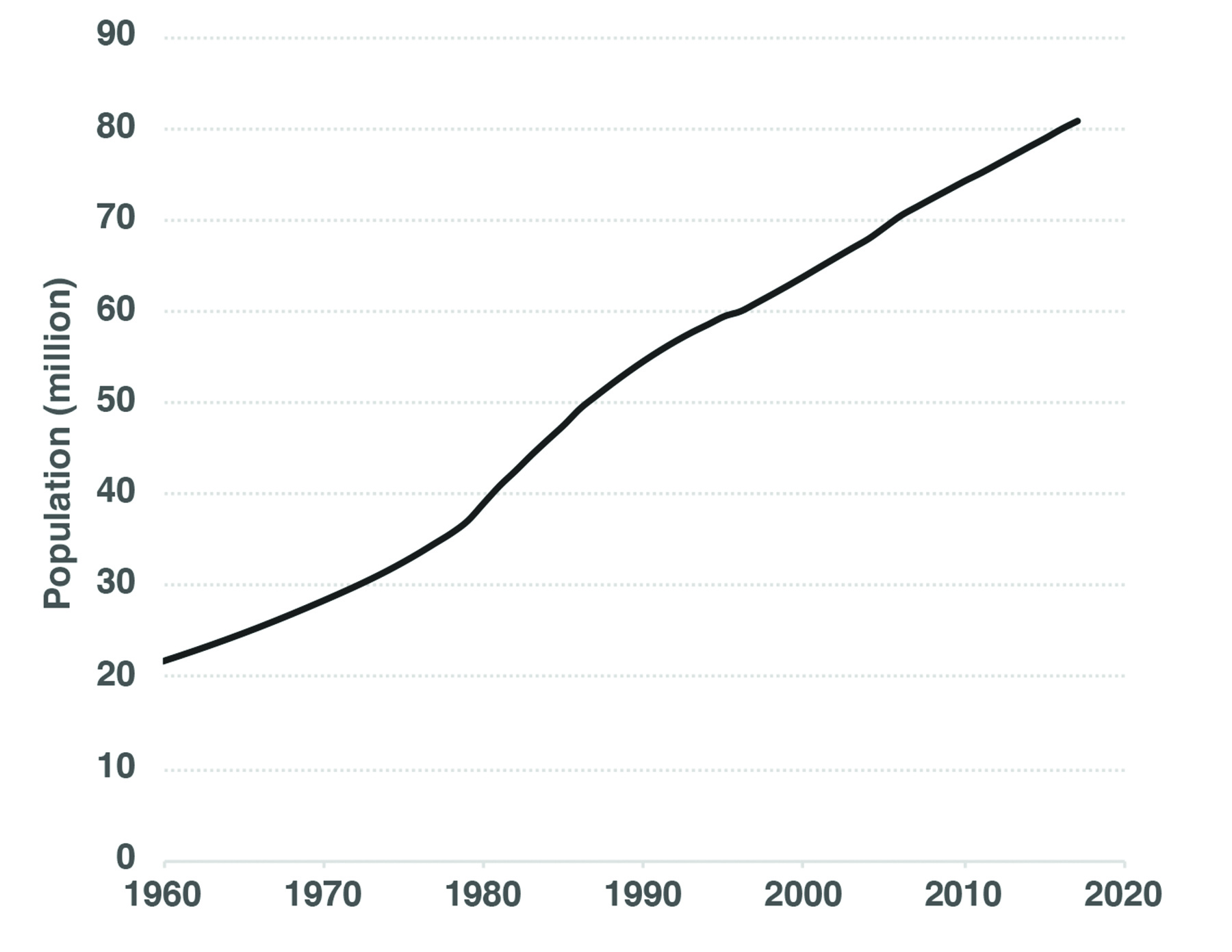
Figure 2. Dramatic drop in the total fertility rates of Iran and comparison with some other countries in the Middle East (1980–2015)
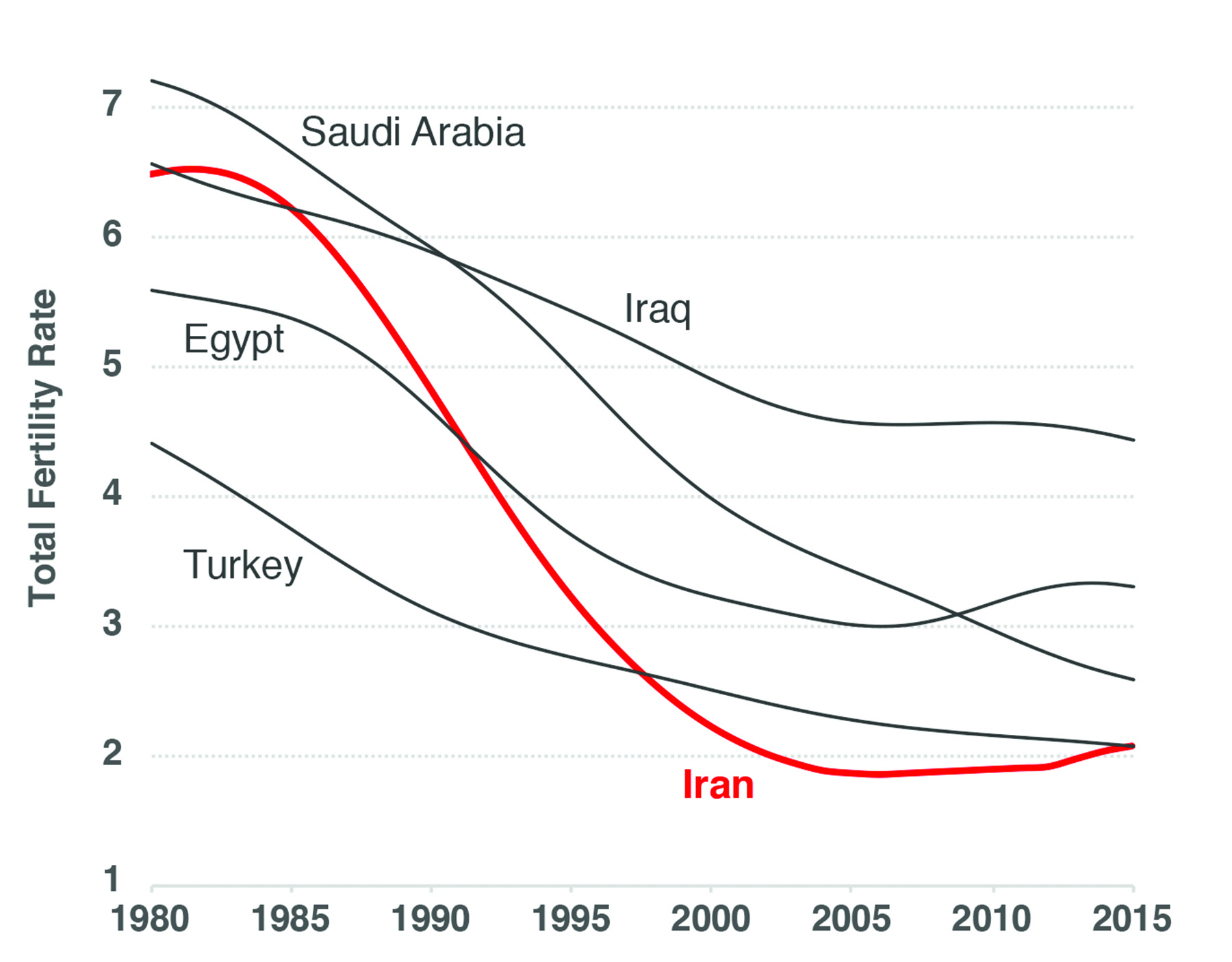
Figure 3. Population age structure (1985-2050). Future projections are based on the UN instant-replacement scenario
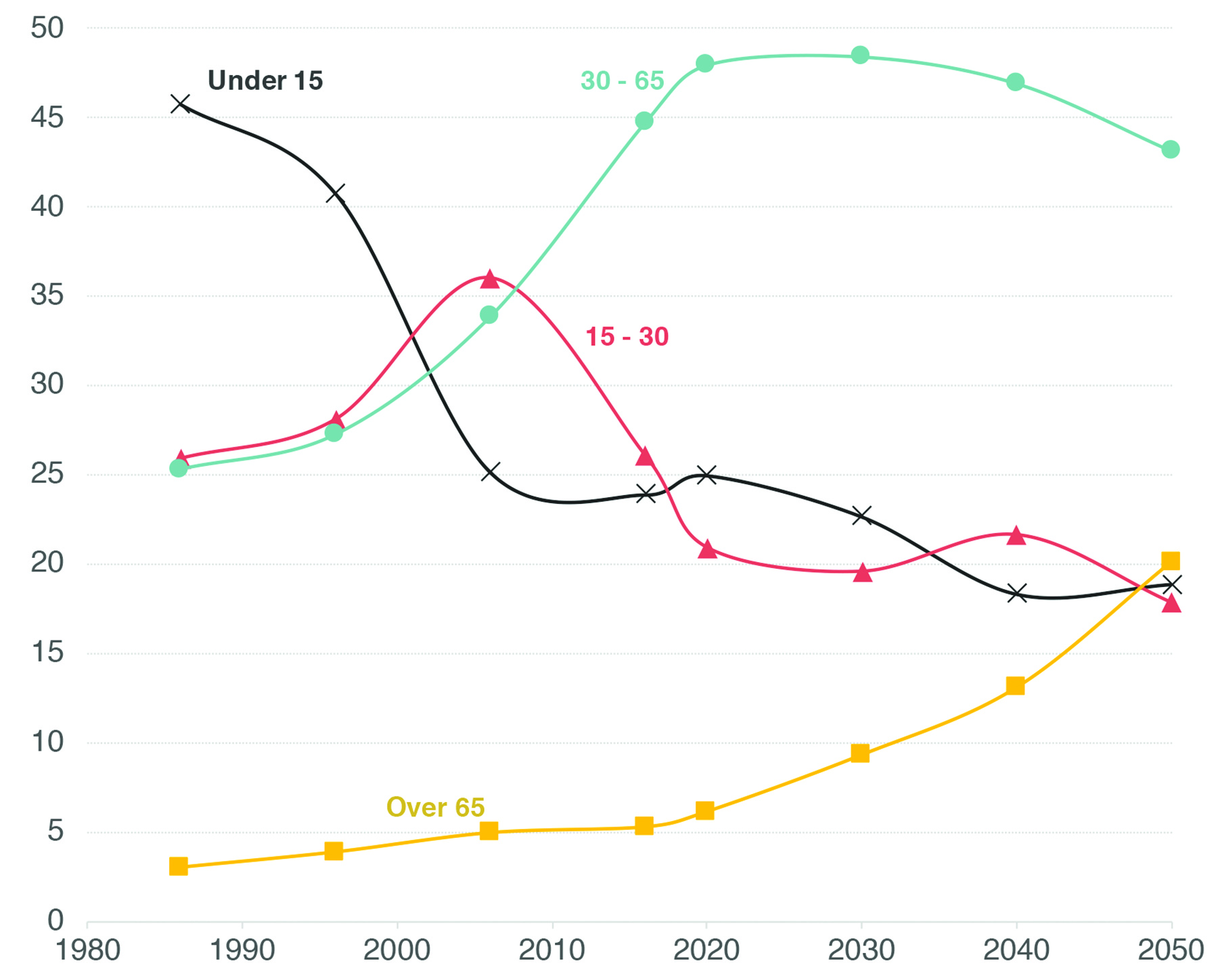
Figure 4. Educational attainments of Iranians by age and gender in 2016
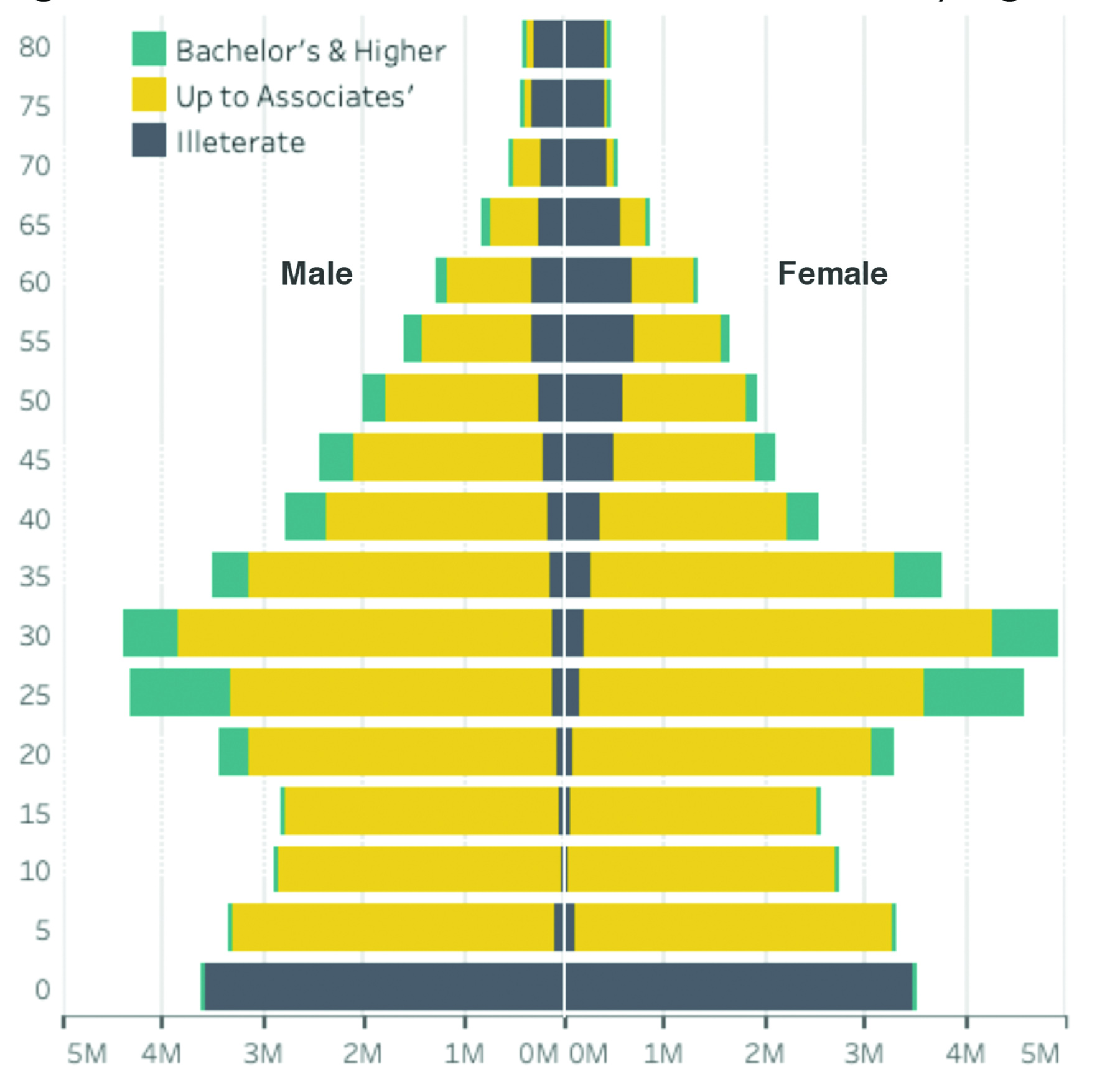
Figure 5. Labor force participation and unemployment rates in 2018
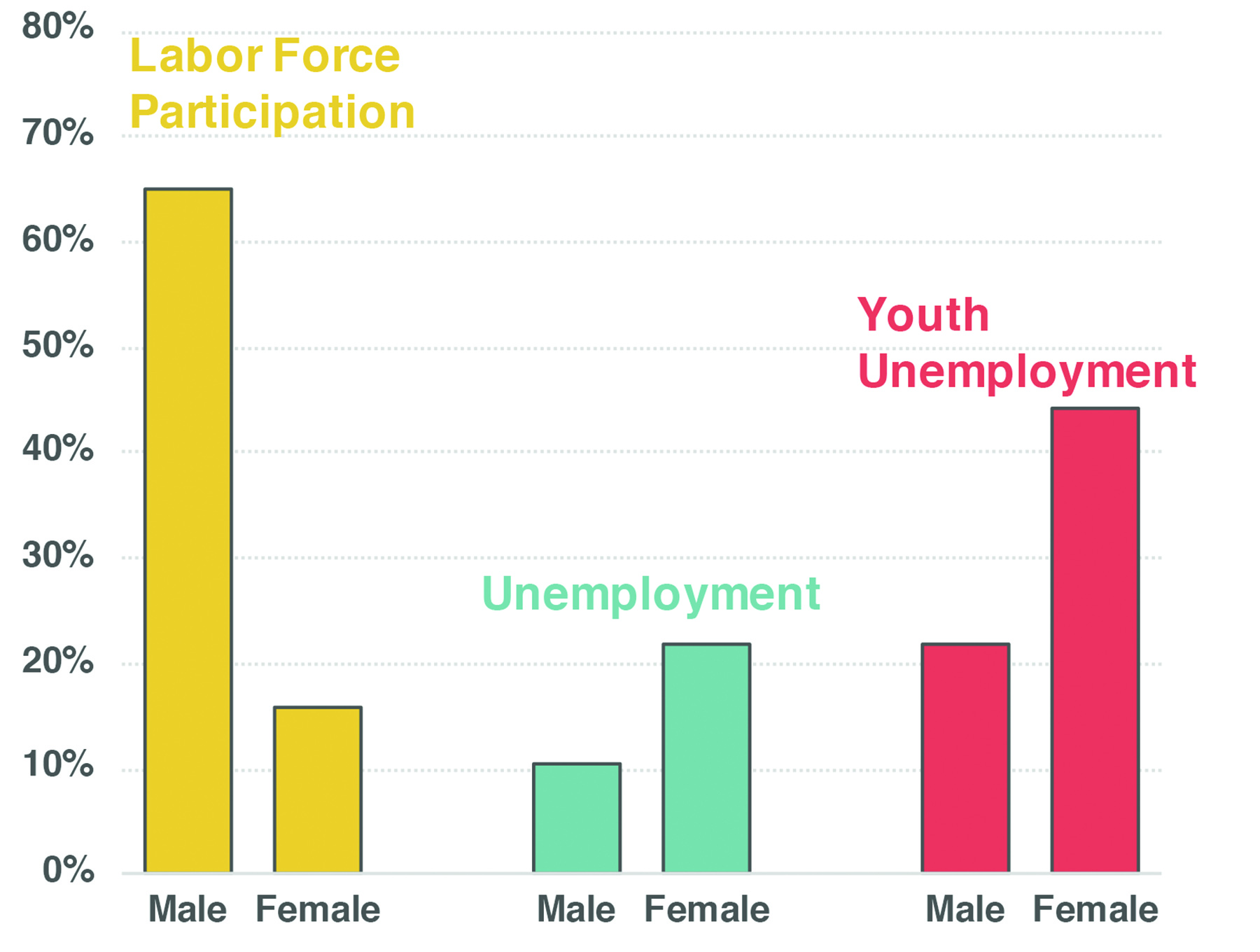
Figure 6. Comparison of Internet penetration, cellphone subscriptions, international Internet bandwidth, households with computer (2017) and Internet freedom score (2018) in the Middle East, Iran, China, and the developed countries.21
